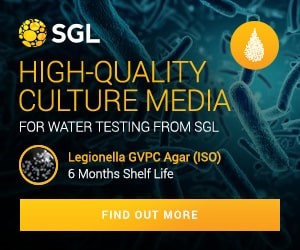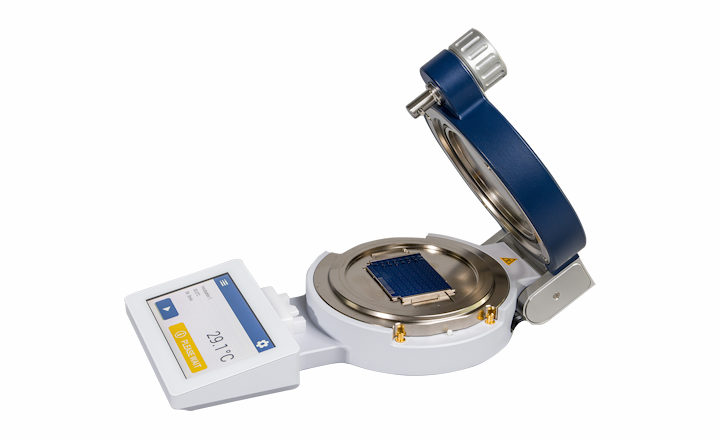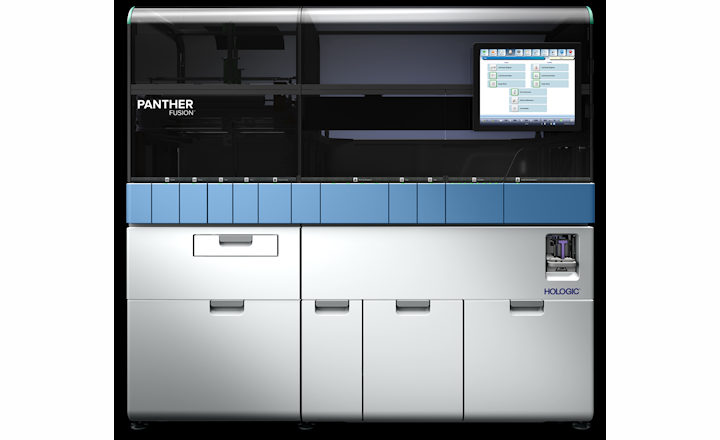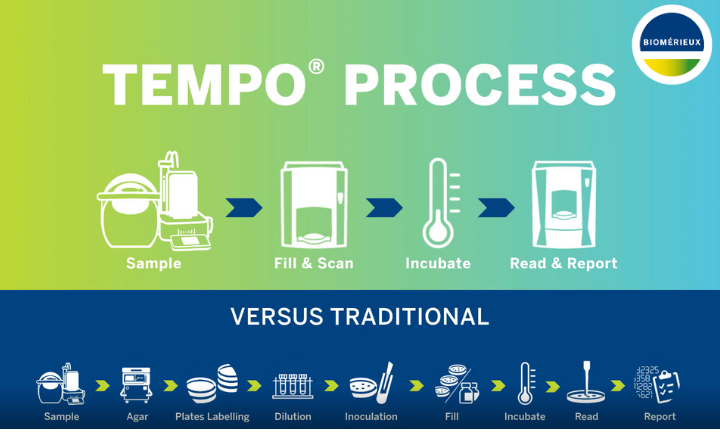Campylobacter are of great importance to the food industry as the major cause of bacterial food poisoning. Campylobacter species can be very interesting bacteria due to their relatively high sensitivity and fragility. This organism is unusual as, despite its virulence, it is easily killed by cooking, disinfection and exposure to concentrations of oxygen present in the air. It is also known that the species doesn’t grow at chill temperatures (but can survive).
During analysis within a food laboratory, the microorganism must be treated with the utmost care and attention to prevent it from dying. Despite this sensitivity, Campylobacter remain the major cause of bacterial food poisoning in the UK. The number of reported cases rose steadily in England and Wales from 12,128 in 1981 to a peak of 65,044 in 2012; the latest published figures amounted to 56,729 in 2017 (PHE).
Species most often associated with human disease are Campylobacter jejuni and Campylobacter coli; less likely culprits include Campylobacter lari, Campylobacter upsaliensis and Campylobacter conciscus. Campylobacters may be defined according to their ability to grow at different temperatures. C. jejuni, C. coli and C. lari have an optimal growth temperature of 42-43°C and do not grow below 30°C and hence are termed ‘thermophilic Campylobacters’. Despite their higher growth temperatures, they are not particularly heat resistant, being adequately reduced by the pasteurisation process of 70°C for 2 mins or equivalent.
C. jejuni causes more than 90% and C. coli less than 10% of infections in the UK. Campylobacter species have a relatively low infective dose of 50-500 cells, but once infected, they can cause a gastrointestinal condition called Campylobacteriosis. With an incubation period of 24-72h, the disease is characterised by severe diarrhoea, abdominal cramps, fever and headache. However, the infection is usually self-limiting, lasting about 5-7 days. Rarely, complications can occur, including bacteraemia and an autoimmune disease called Guillain-Barré syndrome.
Due to Campylobacter being such a significant food pathogen, it has merited a lot of attention over recent years from both the Food Standards Agency (FSA) and industry. A recent FSA strategy has included the priority of tackling Campylobacter in chickens. A survey carried out by the FSA, initially in 2007-2008, reported Campylobacter was present in 65% of the fresh chicken samples tested at the point of sale. The findings highlighted that there are Campylobacter related challenges in our food production.
The survey’s results initiated a Campylobacter Risk Management Programme encompassing a range of government and industry partnership led projects. For example, the poultry industry introduced interventions to reduce Campylobacter incidence in chickens as well as putting in place an ongoing voluntary monitoring program. The program categorised levels of Campylobacter contamination into three bands:
- less than 100 colony forming units per gram (cfu/g)
- 100-1000 cfu/g, and
- greater than 1,000 cfu/g
The aim was to reduce the proportion of chickens in the bands with the higher levels of contamination. In 2015, the FSA realised the decrease of contaminated chickens within the higher bands.
Campylobacter testing
At Campden BRI, we take part in Campylobacter testing on behalf of retailers in the monitoring of chickens for the industry and FSA surveillance work. We do this using the FSA harmonised method which is based closely on the ISO Enumeration method.
To enable the effective monitoring of Campylobacter levels in chickens across the UK, an effective method is required. This method must isolate Campylobacter cells but prevent potential false negative results or artificially reduced enumeration levels. Due to the sensitive nature of this microorganism, it’s important that a method can overcome the potential injury to cells. This injury may be caused by food processing, the high incubation temperature or an unfavourable atmospheric gas concentration. It Is crucial that a laboratory can mitigate the conditions that can interfere with the accurate detection and enumeration of Campylobacter.
Traditional methods of detection, enumeration and identification
Most techniques for Campylobacter isolation follow a conventional approach, with ISO standards in place for both detection and enumeration. The ISO method for the detection of Campylobacter 10272-1:2017 has several variations depending upon the food being tested:
- Detection Procedure A – a selective enrichment (Bolton broth) to allow the resuscitation of cells in samples with low numbers of potentially injured Campylobacters, and a low level of background microflora e.g. cooked products.
- Detection Procedure B – a selective enrichment broth (Preston broth) to inhibit background microflora. This is for samples with low numbers of potentially injured Campylobacter and a high level of background flora e.g. raw meat and poultry.
- Detection Procedure C – for direct plating onto agar in samples with high numbers of viable Campylobacter e.g. faecal and caecal samples.
Enrichment broths are subcultured onto Modified Charcoal Cefoperozone Desoxycholate (mCCD) agar to allow selective growth and differentiation of Campylobacter from other microorganisms within the microflora. Following detection, ISO 10272-2:2017 outlines the method of enumerating Campylobacter in chicken by using the colony count technique on mCCD agar. This will ultimately determine the number of Campylobacter CFU found per gram.
The ISO Detection and Enumeration methods give presumptive results in 2-4 and 2-days, respectively. A confirmed result, however, requires additional morphological, biochemical and growth tests, and take a further 3-days. To identity the colonies, additional biochemical tests are required.
Evidently, conventional methods of Campylobacter detection can be time consuming and labour intensive. To overcome this, some alternative methodologies do exist. For example, immunological tests using antibodies can be used to capture the target antigen in the Campylobacter and fully automated Enzyme-linked Immuno-Sorbent Assay (ELISA) tests have been developed to reduce labour.
It is the molecular-based detection methods, however, that are substantially speeding up the time to detection and identification result. Some of these methods are based on Polymerase Chain Reaction (PCR) and operate by detecting DNA specific to Campylobacter species.
Rapid method
There is an even more recent method of confirming and identifying Campylobacter that is unparalleled in its level of inexpensive rapidity. It’s called the Matrix-Assisted Laser Desorption Ionisation Time of Flight (MALDI-ToF) system and it is a validated method at Campden BRI. The MALDI-ToF instrument identifies a microorganism based on its unique protein profile. The MALDI-ToF works by directing a laser onto a prepared colony sample which has been dried onto a metal plate. This generates a profile of various specific protein masses that are detected within the system and visualised as a mass spectrum graph. The mass spectrum graphs can be compared against a database and provide an isolate identification.
The MALDI-ToF allows for speedy confirmation of the presumptive Campylobacter within 2 hours, a significant reduction in time compared to the typical three-day protocol. In addition, the result also identifies the Campylobacter species obtained, whereas the ISO method would require further testing to obtain these data.
Campden BRI is experienced in the isolation, enumeration, confirmation and identification of isolates of Campylobacter from foods, giving an accurate and speedy turnaround of results. Find out more:

Julie Archer has worked at Campden BRI for the past 12 years and currently manages the Microbiological Analytical Services (MAS) section within the Microbiology Department. The MAS group undertakes the testing of a wide range of food products, using both UKAS and non UKAS acreditated methods for pathogenic and spoilage microorganisms, shelf-life testing, sterility and spoilage analysis of heat processed foods, and identification and characterisation of isolates using biochemical and molecular methods i.e. sequencing and Ribotyping and Mass Spectroscopy.
























